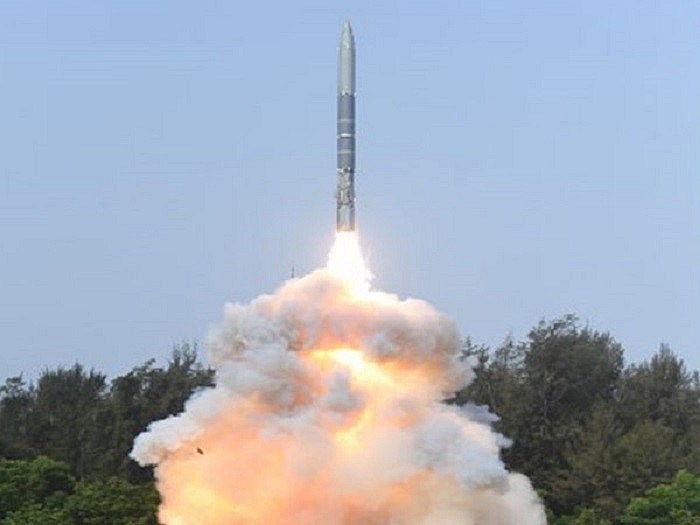India boosts anti-submarine warfare, successfully tests 'Supersonic Missile-Assisted Release of Torpedo' system
 |
The Supersonic Missile-Assisted Release of Torpedo (SMART) system, designed and developed by the Defence Research and Development Organisation (DRDO) in India, is a next-generation missile-based lightweight torpedo delivery mechanism.
According to a report, the SMART system to launch lightweight torpedoes can target submarines hundreds of kilometres away — far beyond the conventional range of lightweight torpedoes.
As per DRDO, this canister-based missile system consists of several advanced sub-systems, namely two-stage solid propulsion system, electromechanical actuator system, precision inertial navigation system etc.
The system carries an advanced light-weight torpedo as payload along with a parachute-based release system, the DRDO stated in a media release.
Besides the SMART system, the Indian Navy is all set to commission newly-inducted MH 60R Seahawk multi-role helicopters to bolster anti-submarine warfare capabilities.
According to the Indian Navy in March, the MH 60R Seahawk multi-role helicopters are designed for anti-submarine warfare (ASW), anti-surface warfare (ASuW), search and rescue (SAR), medical evacuation (MEDEVAC) and vertical replenishment (VERTREP).
The advanced weapons, sensors and avionics suite make the Seahawks ideal for the Indian Navy’s maritime security needs, offering enhanced capabilities for both conventional as well as asymmetric threats.
The Indian Navy said that MH 60R helicopters will enhance India’s blue-water capabilities, extending the operational reach of the Navy and supporting sustained naval operations across spectrums and over vast maritime domains.
The Seahawk’s deployment in the IOR would strengthen the Indian Navy’s maritime presence, dissuading potential threats and ensuring a secure and safe environment in this strategically crucial region, the Navy added.
In December, 2022, the Indian Navy launched its first anti-submarine warfare shallow water craft (ASWSWC), INS Arnala.
According to the Indian Navy, the Arnala class of ships will replace the Abhay class Anti-Submarine Warfare (ASW) ships of the country's naval force and are designed to undertake anti-submarine operations in coastal waters and Low Intensity Maritime Operations (LIMO) including subsurface surveillance in littoral waters.
Later in November last year, the Navy launched three more Anti-Submarine Warfare (ASW) shallow water crafts- INS Mahe, INS Malvan and INS Mangrol.
As per the Indian Navy, the Mahe class of ships will be equipped with indigenously developed, state-of-the-art underwater sensors, and are envisaged to undertake anti-submarine operations in coastal waters as well as Low Intensity Maritime Operations (LIMO) and Mine Laying Operations.
The simultaneous launch of three ships of the same class highlighted the force's strides in indigenous shipbuilding, towards ‘Aatmanirbhar Bharat’ (Self-reliant India), said the Indian Navy, adding that the anti-submarine warfare shallow water crafts (ASWSWC) will have over 80 percent indigenous content, ensuring that large scale defence production is executed by Indian manufacturing units, generating employment and capability enhancement within the country.
According to the latest developments, the Indian Navy in March launched 'Agray' and 'Akshay' ships to enhance anti-submarine warfare.
The Navy stated in its media release that 'Agray' and 'Akshay' are the 5th and 6th ships of the eight anti-submarine warfare shallow water crafts (ASWSWC) project being built by the Garden Reach Shipbuilders & Engineers Ltd (GRSE) for the Indian Navy.



